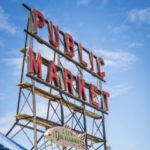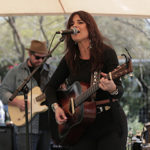Goldberger also shared his top two favorite places in New York — which turned out to be not buildings at all, but Central Park and the Brooklyn Bridge — as well as his views on “starchitects,” the function of memorials in American culture, and the transforming power of architecture.
Architecture … is the making of place and the making of memory. The urban impulse is an impulse toward community — an impulse toward being together and toward accepting the idea that however different we may be, something unites us. But what do we do in an age when every force pushes us away from cities, pushes us apart rather than together? And how we we make valid, lasting memory when it becomes so easy not to see the familiar, when we take it for granted and no longer even notice it? … We have to think hard about how the experience of being together will come to pass and how architecture can express a sense of community, a sense of common ground …
And this:
Architecture represents the real, and is ever more precious in an age of virtual. Every piece of architecture is an opportunity for real experience.
I could have stayed home and read Goldberger’s book, or hoped the museum would archive the talk. But I went and had an experience that I will remember.




